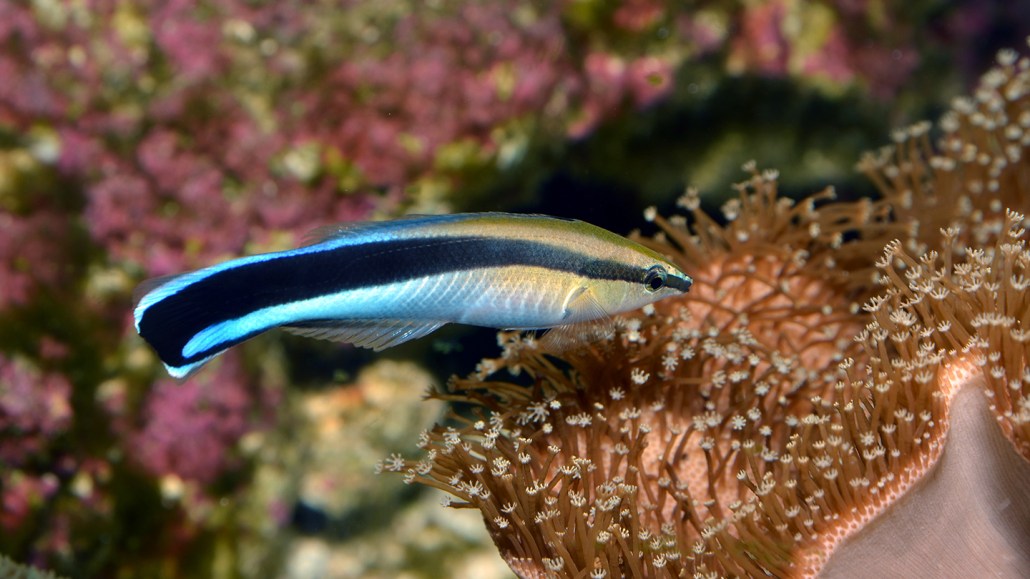
Bluestreak cleaner wrasse, Labroides dimidiatus, can recognize photos of themselves, suggesting that they have self-awareness.
marrio31/iStock/Getty Images Plus

Bluestreak cleaner wrasse, Labroides dimidiatus, can recognize photos of themselves, suggesting that they have self-awareness.
marrio31/iStock/Getty Images Plus